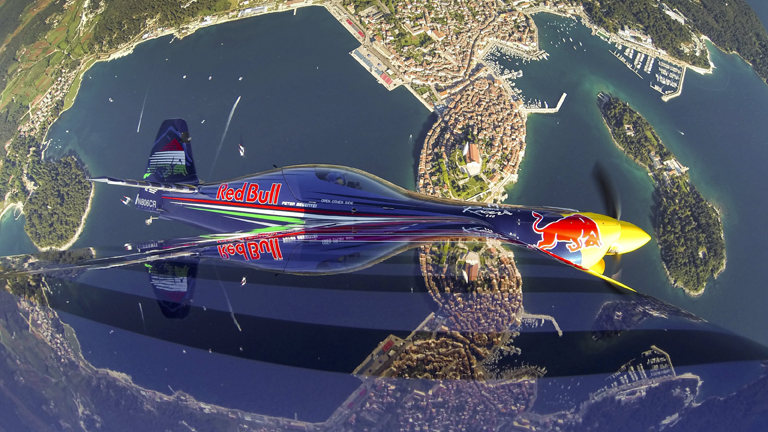
There are plenty of sports out there that provide bucketloads of the thrill factor, but the Red Bull Air Race packs in an extra level of slightly nutty edge-of-your-seat scariness that makes it essential viewing. The UK round of this 8 date world tour takes place at Ascot racecourse in August and is, according to those who know, one of the best on this annual flying extravaganza.
That's something when you're pitched against the likes of Abu Dhabi, Budapest and sunny Las Vegas. The idea itself began as the result of a Red Bull sports think-tank back in 2002 and an inaugural season followed in 2003. By 2015 the Ascot event alone attracted over 50,000 people and the other dates around the globe have been enjoying similar numbers.
High-octane thrills
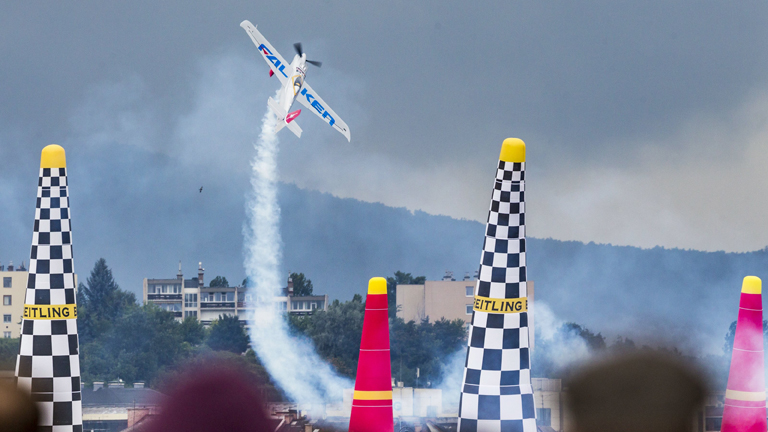
Pilots have to do a lot of homework and keep a constant eye on the wind
The planes are small, light and incredibly nimble, which is vital in what is essentially a game of beat the clock. These tiny aircraft are designed to withstand up to ten times the force of gravity. There's the Edge 540, the MXS-R and the Extra 330LX, all of which come fitted with a high-performance six-cylinder standardised Lycoming Thunderbolt engine, tweaked especially for the tournament. The course is marked out using large cone-shaped markers that are kept upright by fans blowing air into them. Perfecting their design has taken a while so that they're strong enough to stay up, but break easily if a wingtip clips them.
The pilots, meanwhile, are a mixture of nationalities, ages and hairstyles but they all have one thing in common and that's amazing flying skills. Make no mistake, the competitors in the Red Bull Air Race have many, many hours of flying under their belts. Some are commercial airline pilots when they're not pulling 4 plus Gs on the Air Race circuit. And, if you're an adrenalin junkie, then the appeal is clear to see.
Serious business
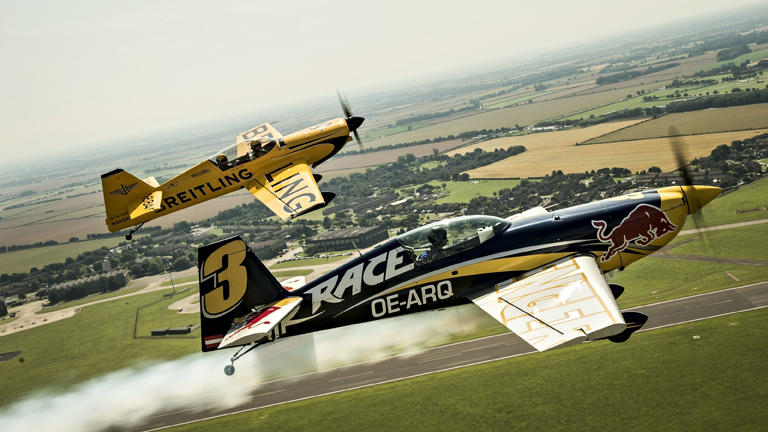
Smoke trails are released each time an aircraft makes a run
However, while the aerobatics and flying antics might look ever so slightly crazy, don't be fooled into thinking these people are larking around. Every manoeuvre is worked out with precise planning. Each twitch of the wing has been calculated beforehand and, although the weather can make things unpredictable, every competitor has a good idea of what to expect before they leave the ground.
Sign up to the T3 newsletter for smarter living straight to your inbox
Get all the latest news, reviews, deals and buying guides on gorgeous tech, home and active products from the T3 experts
Behind the scenes, the infrastructure for the Air Race is a little akin to a rock band on a world tour and the whole thing is a self-contained bundle of people, planes and technology that packs down the minute each leg is over and then heads on to the next event. The aircraft are disassembled as much as possible, wrapped in plastic and flown on a cargo plane to the next event, or taken by road if the distance isn't too far. They are also flown from place to place on occasions.
Crew and equipment
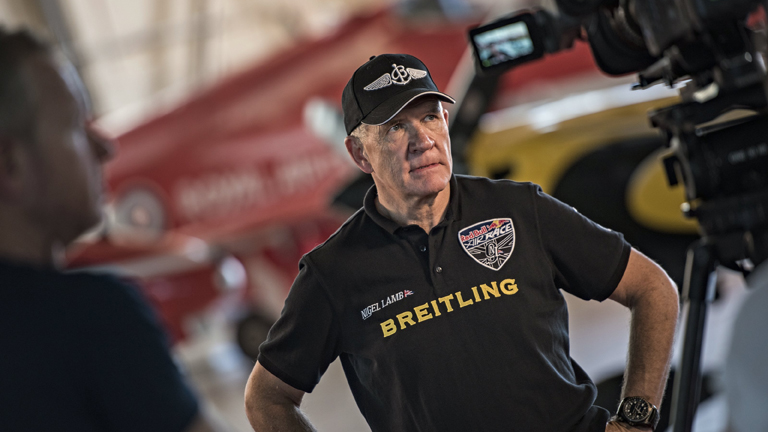
Nigel Lamb talking to the media during the 2016 season
Backstage there are flat-pack hangars for the aircraft and associated equipment. It's all black cloth and aircraft-grade aluminium struts that make the crew area seem more like a music festival. Nevertheless, behind the smiles and general air of friendliness from the amiable bunch of pilots and crew, there is a definite serious side to the business. Competition is fierce, so numbers are crunched and data is analysed before, during and after a race, in order to ensure that runs are as good as possible.
“The challenge is always variable and you never really lose that excitement factor,” says Nigel Lamb, who won the championship in 2014 and flies the MXS-R, resplendent in Breitling livery. “Even comparing the event to the air race of a few years ago, the passion for it hasn't diminished at all.” Having the passion is one thing, but Lamb also relies on his small but hugely dedicated crew that includes long-time technician Nigel Huxtable and race-analyst son Max Lamb.
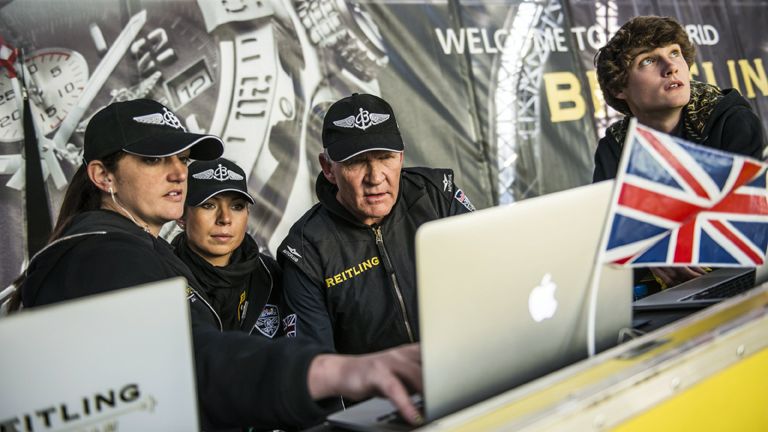
Nigel Lamb and his crew crunch the numbers
The other notable British pilot (though Lamb was born in Rhodesia) is Paul Bonhomme, a British Airways captain who won the championship last year and announced his retirement from the sport on the same day. “Anything can happen,” he said at the time inbetween glugs of apres race Champagne at the season finale held in Las Vegas.
Unpredictable racing
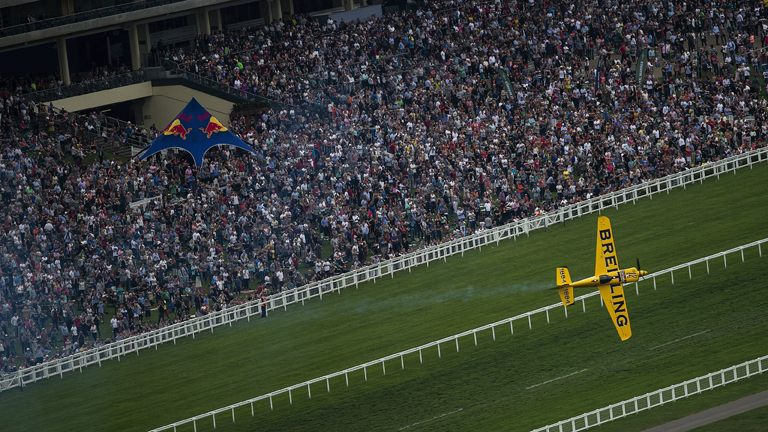
The Red Bull Air Race pulled in over 50,000 people at Ascot last year
Adding to the excitement is the fact that every event has its own things to look out for. “No two races are the same,” reckons Lamb. “Even when you go back to the same location, the track will be slightly different. So you'll find that a couple of gate angles will have changed and so on. On top of that, each run is also different. What people possibly don't understand is that although our track is marked on the ground in two dimensions, we fly an invisible three-dimensional line and the way you fly that line will change and depend on the speed and direction of the wind because it can open or close a corner. So imagine Silverstone and during the one and a half hour race the track just changes all the time. You've really got to know what that wind is doing. Our race is only one minute, but if you don't pay attention to that then you'll already be in a mess.”
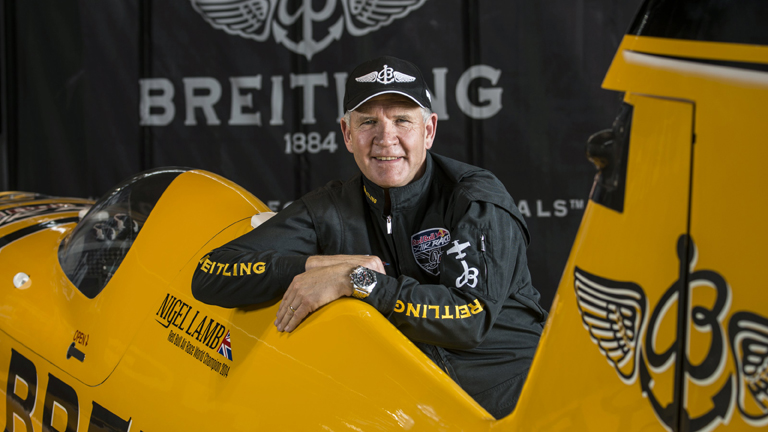
Pilot Nigel Lamb who won the championship in 2014
Somewhat surprisingly in an age where we're fixated with health and safety, Red Bull does allow selected journalists to enjoy a media flight. You need to have all the paperwork in order, including an overview of your health, but after that all you have to do is wait. Best advice for those selected is to have a light breakfast, rather than nothing. Definitely avoid a full English as you might end up filling the sick bag you have to stick up the arm of your overalls. Then, simply turn up and follow the instructions from the crew and pilot.
Amateur hour
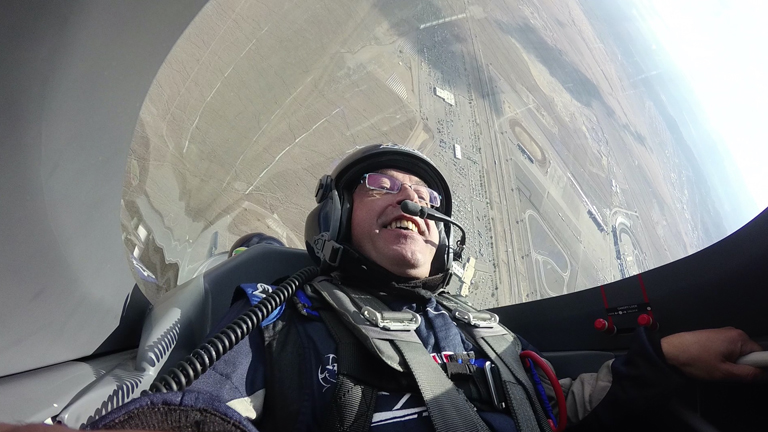
You have to pull some pretty silly faces to fend of the effects of G forces
“Pull this to open the parachute,” they'll say as you get a whistle-stop tour of what to do in an emergency. “And don't touch anything” is the sound advice as you step into the cockpit of a special twin-seat Red Bull aircraft. You need to watch you don't put your feet on the pedals as this can activate the brakes, which at the wrong time would not be a good thing to happen. However, they do stick an action camera in front of you, so the whole G-force-laden ten minutes or so can be captured on video.
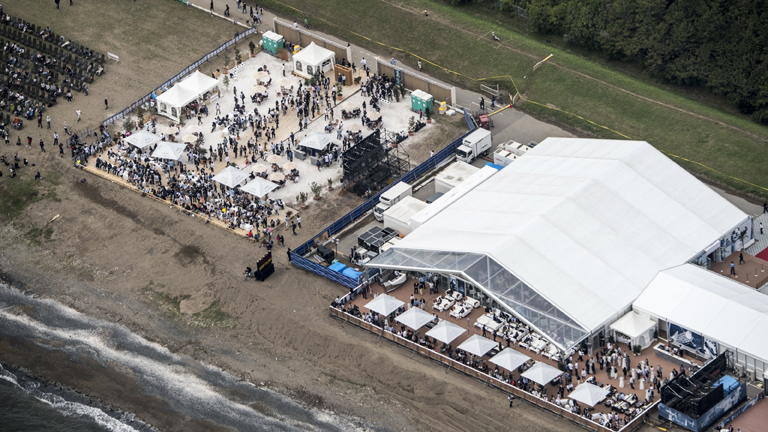
The backstage area of the Air Race is akin to a rock band on tour
Fending off the effects of 4-plus Gs takes a little practice it has to be said. You basically have to tense yourself up and grimace as ridiculously as possible in order to keep the blood in the top half of your body. So, when you get the nod from the pilot's intercom that you're about to flip, loop or dive then it's time to gurn like your life depends on it. If you don't then things can go pretty bad very quickly and, at worse, you'll black out. Or throw up. Or both. Nevertheless, it's an experience quite like no other and, despite the fact that it takes your organs a little while to settle down back on terra firma, most people tend to want to do it again.
Better racing

The bollards are kept upright by fans blowing air into them
Back at the competition and there have been some tweaks to the race format this year too, in order to make it fairer: “We had two scenarios in 2015 where we had the same pairing in the Round of 14 and Round of 8. So, we changed the order of the Round of 8 to be directly related to the time that each pilot posted in his Round of 14,” explains Race Director Jim Dimeter. “We all feel this order is more fair to the pilots and improves the competition for any given location, ultimately resulting in an even more exciting race.”
And, even if that doesn't make much sense, all you really need to do is head along, watch the skies and the whole thing will magically unfold, right there before your eyes. It really is poetry in motion.
Rob Clymo has been a tech journalist for more years than he can actually remember, having started out in the wacky world of print magazines before discovering the power of the internet. Since he's been all-digital, he has run the Innovation channel for a few years at Microsoft, as well as turning out regular news, reviews, features and other content for the likes of Stuff, TechRadar, TechRadar Pro, Tom's Guide, Fit&Well, Gizmodo, Shortlist, Automotive Interiors World, Automotive Testing Technology International, Future of Transportation and Electric & Hybrid Vehicle Technology International. In the rare moments he's not working, he's usually out and about on one of the numerous e-bikes in his collection.


